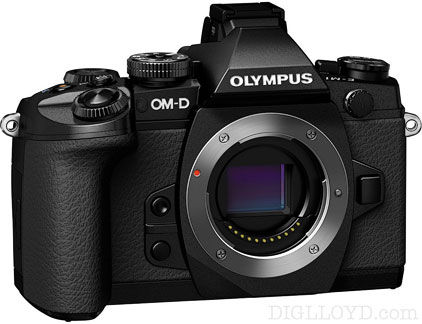EXCERPT page containing first few paragraphs. 2024-04-18 15:12:45
UA_SEARCH_BOT_null @ 18.117.186.92
For full access, subscribe here. Or click title to login. ![]()
Olympus E-M1 Performance Under Extreme Lighting
One of my concerns with any camera is how it performs under adverse lighting. An example of this is canyon shade early in the day: extremely blue in color, as high as 30,000°K. With photographic film that color light left nothing but the blue layer on the film; absolutely nothing else was left and it was impossible to restore any other color whatsoever (I have such slides!).
A digital sensor has overlapping color filters and is far more capable of dealing with a wide range of lighting conditions than color reversal or color negative film could ever hope to do, though noise can intrude in extreme lighting (which is my concern noted above).
The photographer shooting raw format has a huge advantage in being able to choose white balance after making the image. The key is only to not blow past the recording capability of the sensor (too dark or too bright), thus allowing full adjustment latitude.
Article continues for subscribers...
Diglloyd Guide to Mirrorless is by yearly subscription. Subscribe now for about 25 cents a day ($90/year).
BEST DEAL: get full access to ALL 8 PUBLICATIONS for only about 75 cents a day!
Diglloyd Guide to Mirrorless offers comprehensive integrated coverage of most APS-C and full frame mirrorless cameras and lenses.
Special emphasis is placed on Sony full-frame, including Sony lenses and the high performance Zeiss Batis and Zeiss Loxia lenses plus Rokinon/Samyang and others. Fujifilm X, Olympus and Panasonic M4/3, Sigma dp Merrill and dp/sd Quattro are also covered in depth. Years in the making, it offers a wealth of material for choosing and using a mirrorless camera.
- Make better images by learning how to get the best results right away. For example, the best way to set up your Sony camera.
- Save money by choosing the right lens for your needs the first time, particularly with the numerous lenses available for Sony.
- Make better images, a sort of “cheat sheet” saving yourself months or years of ad-hoc learning—best practices and how-to and processing parameters are discussed and shown.
- Jaw-dropping image quality found nowhere else utilizing Retina-grade images up to full camera resolution, plus large crops.
- Real world examples with insights found nowhere else. Make sharper images just by understanding lens behavior you won’t read about elsewhere.
- Aperture series from wide open through stopped down, showing the full range of lens performance and bokeh.
- Optical quality analysis of field curvature, focus shift, sharpness, flare, distortion, and performance in the field.
Want a preview? Click on any page below to see an excerpt as well as extensive blog coverage, for example on Sony.



